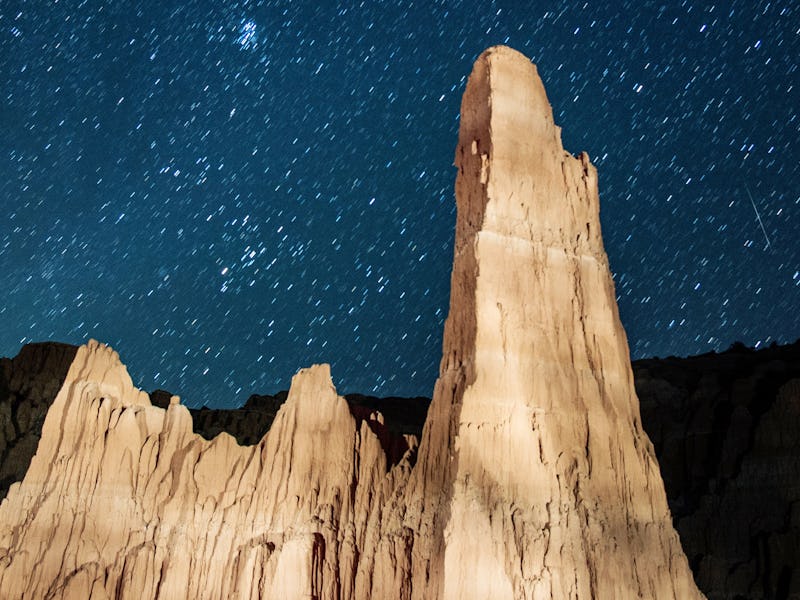Tools to Help Your Chances of Seeing the Quadrantid Meteor Shower
Dark sky maps will help you decide whether or not it's worth it to stay up all night to catch this impressive light show.

You’re debating whether or not to stay up late to catch the first and maybe most impressive meteor shower of 2016. It’s easy enough to pull a party all-nighter while hugging a bottle of champagne and welcome in the New Year, but that was only like three days ago. Most of us are still recovering from that endeavor. But the Quadrantid meteors only sail through the sky this time of year like Santa Claus.
And like that old, bearded fellow, this shower has a short peak window — from January 3–4, between 3 a.m. and dawn. It’ll likely be a magnificent display of fireballs with approximately 80 meteors per hour speeding at 25.5 miles per second.
NASA suggests finding a dark spot where you can lay down with feet facing the northeast. Alaska and Hawaii are the best places to watch in the U.S. and those on the West Coast have an advantage. The Christian Science Monitor elaborates on where to look: “The meteors appear to radiate from a spot on the sky midway between the last handle star of the Big Dipper and the head of Draco, the Dragon.” You know, that place.
To help you find out if it’s even possible to get a glimpse of these broken asteroids, we suggest you visit both The Weather Channel and AccuWeather.
But besides cloud coverings, the worst enemy of the stargazer is light pollution. Check out the International Dark Sky Association’s online map to find a good dark spot.
There are other sites that can help you avoid that light which eclipses the stars. Dark Site Finder is quite lovely looking but also depressing because it points out how much artificial light mars the planet. Light Pollution Map lets you see how light pollution has affected the globe over the years.
ObservingSites.com is for amateur astronomers and offers the finest places to stargaze state-by-state. There is also Dark Sky Meter, which indicates where there’s a city sky, bright (suburban) sky, suburban sky, rural sky, and dark sky, so you know where to avoid.
Hopefully, you’ll catch a glimpse of a spectacular light show sometime before heading to work. It’ll be better than a cup of morning coffee.